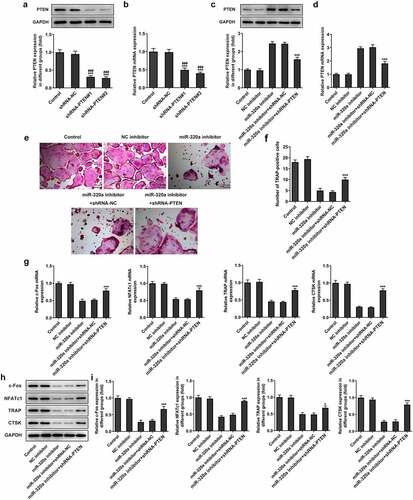Figures & data
Figure 1. The expression of related miRNAs in patients with osteoporosis. (a) The expression of miRNAs in osteoporosis patients and normal people. (b) Gene chip was used for the detection of the difference of the expression of miRNAs between osteoporosis patients and normal people
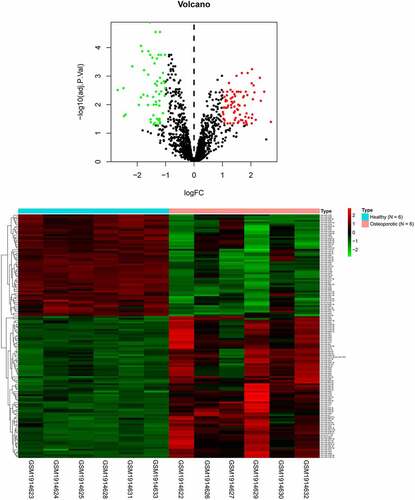
Figure 2. Inhibition of miR-320a suppressed the formation of RNAKL induced osteoclasts. (a) RT-PCR was performed to detect the expression of miRNAs during the formation of osteoclasts. (b) RT-PCR was performed to determine the expression of miR-320a in the RNAKL induced osteoclasts. (c) RT-PCR was carried out to detect the expression of miR-320a in miR-320a knockdown osteoclasts. (d) and (e) TRAP staining was used for the detection of the osteoclasts. (f) and (g and h) The expression of markers of osteoclasts was detected with the q-PCR and Western blotting. *p < 0.05, **p < 0.01, ***p < 0.001
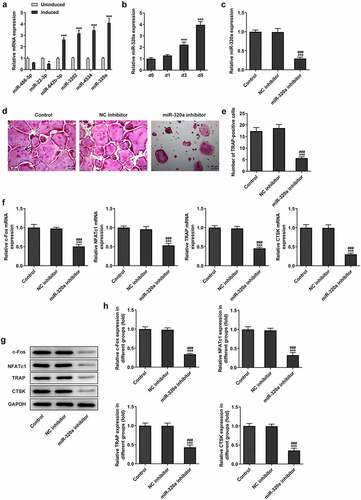
Figure 3. MYC promoted the expression of miR-320a in osteoclasts. (a) and (b) The expression of MYC in osteoclasts was detected with the Western blotting and q-PCR. (c) and (d) Levels of MYC in MYC knockdown osteoclasts were detected with the Western blotting and q-PCR. (e) The expression of miR-320a in MYC inhibition osteoclasts was determined with the q-PCR. (f) The potential binding sites between MYC and miR-320a. (g) Luciferase reporter assays were performed to detect the relationship between MYC and miR-320a. (h) CHIP assays were used for the verification of the association between MYC and miR-320a. *p < 0.05, **p < 0.01, ***p < 0.001
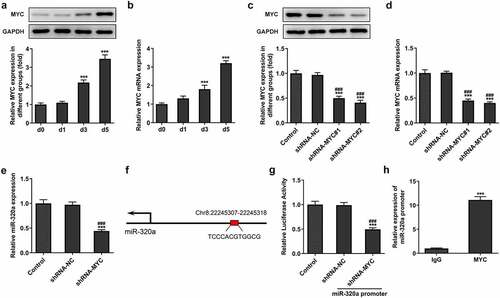
Figure 4. miR-320a targeted the PTEN in osteoclasts. (a) The potential binding sites between miR-320a and PTEN. (b) and (c) The expression of PTEN was detected with Western blotting and q-PCR in RNAKL induced osteoclasts. (d) The expression of miR-320a in miR-320a overexpression osteoclasts was detected with q-PCR. (e) Luciferase reporter assays were performed to detect the relationship between miR-320a and PTEN. *p < 0.05, **p < 0.01, ***p < 0.001
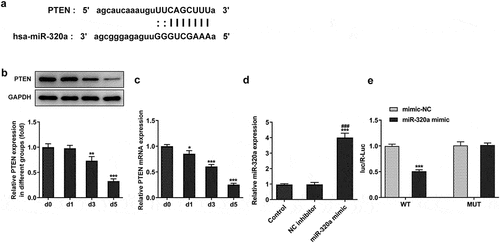
Figure 5. miR-320a promoted the formation of osteoclasts by inhibiting the expression of PTEN. (a) and (b) The expression of PTEN in PTEN knockdown osteoclasts was detected with Western blotting and q-PCR. (c) and (d) Western blotting and q-PCR were performed to detect the expression of PTEN in osteoclasts. (e) and (f) TRAP staining was used for the detection of the osteoclasts. (g) and (h and i) The expression of markers of osteoclasts was detected with the q-PCR and Western blotting. *p < 0.05, **p < 0.01, ***p < 0.001
